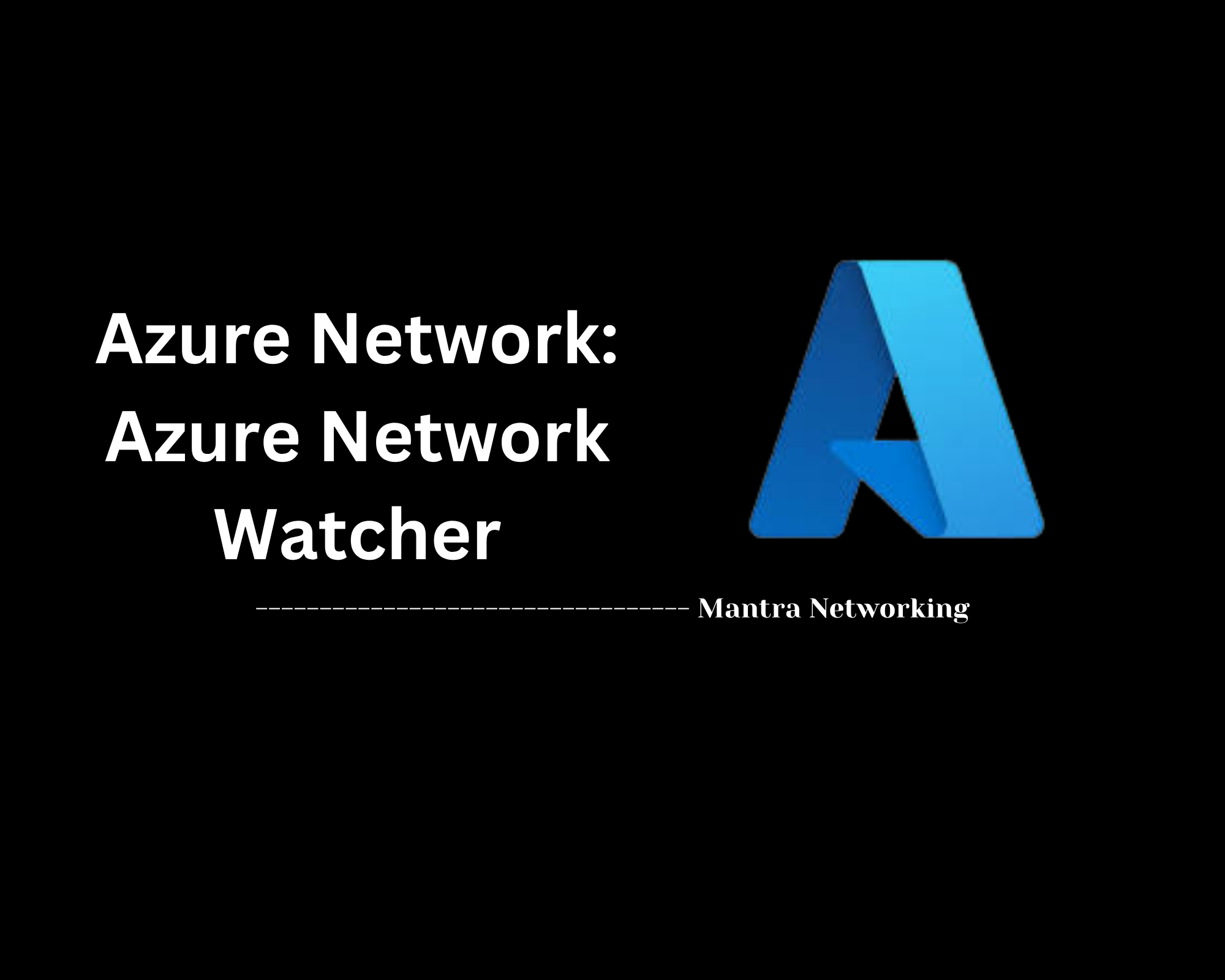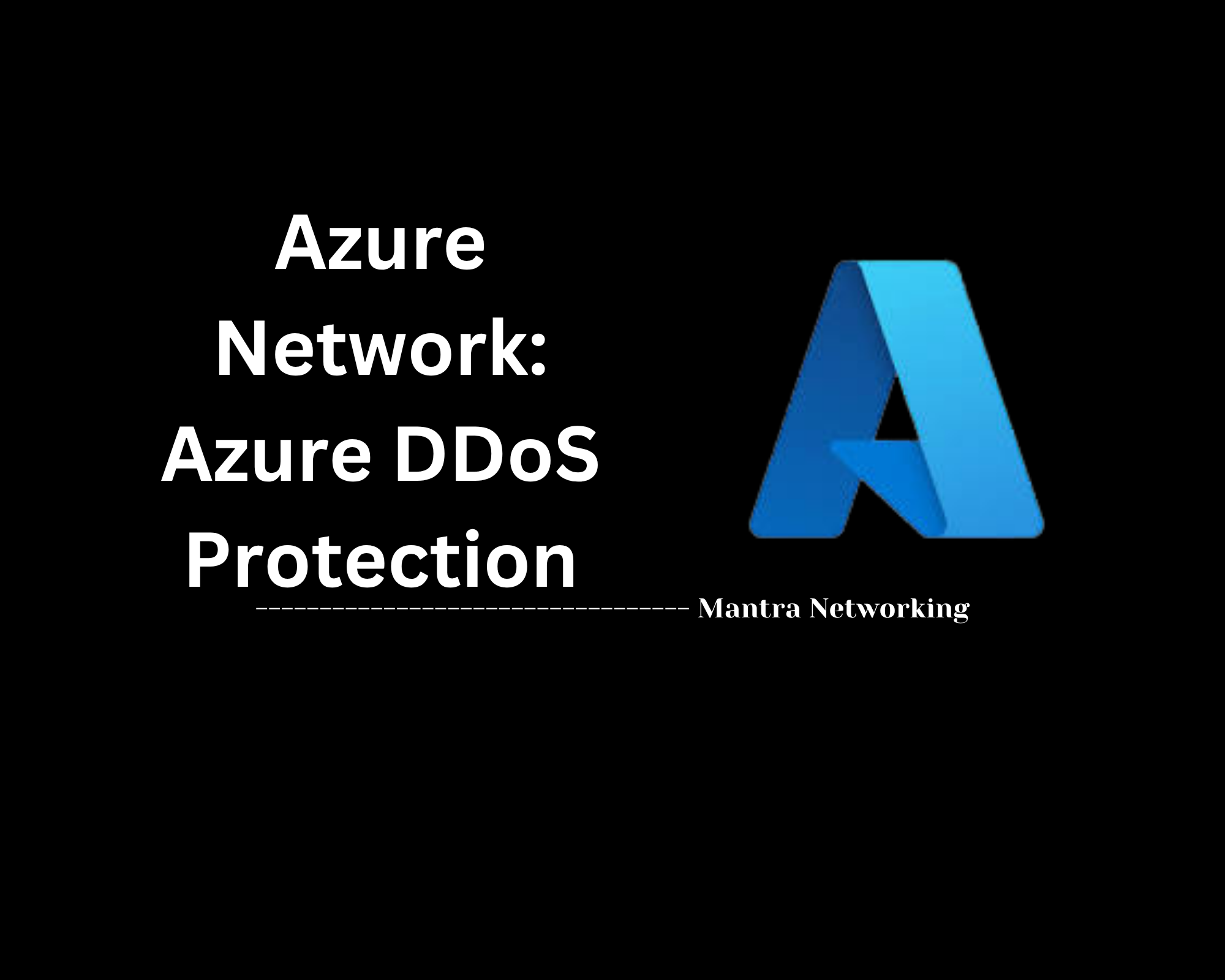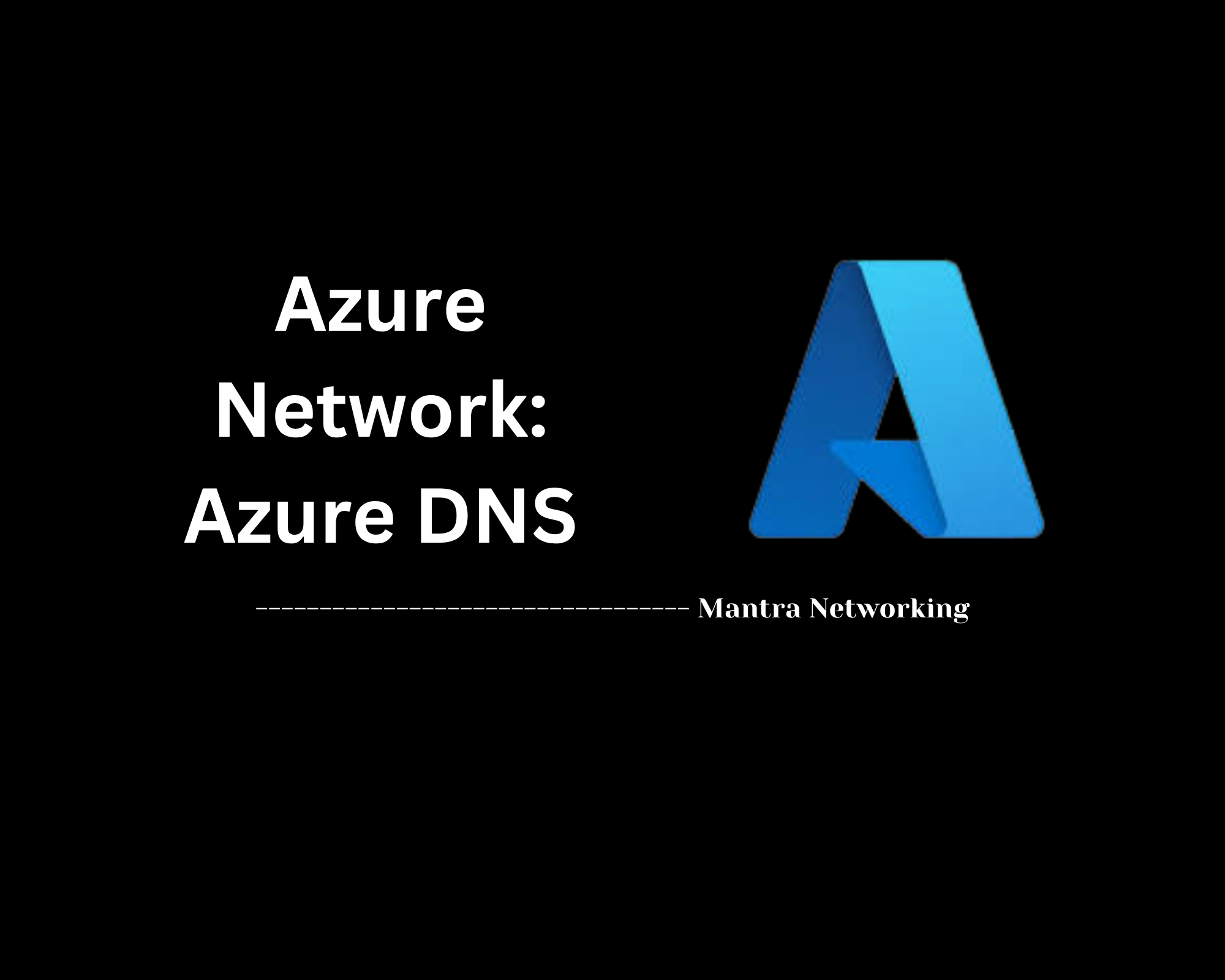Table of Contents
- Overview
- Core Components
- Prerequisites
- Configuration
- Validation
- Troubleshooting
- Conclusion
Azure Networking Deep Dive
Overview: What is Azure Networking?
Azure Networking is the comprehensive suite of connectivity services and tools provided by Microsoft Azure for building, managing, and securing network infrastructure in the cloud. It forms the essential backbone that links together cloud resources, end users, hybrid environments, and the wider internet, enabling seamless data exchange and application delivery across distributed environments.
Key Components
- Virtual Networks (VNets): Private networks that mimic traditional on-premises networks within Azure.
- Subnets: Segments within VNets for workload isolation and security.
- Network Security Groups, Firewalls, Load Balancers: Essential for controlling access, monitoring traffic, and distributing workloads.
Why You Need to Know About Azure Networking
Understanding Azure Networking is crucial for anyone designing or managing cloud solutions. Here’s why:
- Security: Proper configuration helps protect applications and data against threats and unauthorized access.
- Performance: Optimizing network paths and load balancing ensures fast, reliable delivery of services to users worldwide.
- Scalability: Azure Networking allows you to scale resources, applications, and connectivity on demand to meet business growth.
- Hybrid and Global Integration: Facilitates seamless integration with on-premises data centers, branch offices, and global partners.
- Cost and Management Efficiency: Enables centralized management, monitoring, and optimization of resources, helping improve cost control.
How Azure Networking Works
Azure Networking operates on a layered, modular model:
- Building Private Networks:
Organizations create VNets, defining custom address spaces, subnets, and segmentation to organize and secure workloads. - Connecting Resources and Environments:
Services like VPN Gateways and ExpressRoute provide secure connectivity between Azure and on-premises or other cloud environments. - Controlling Traffic and Access:
Security tools such as Network Security Groups, Azure Firewall, and Application Gateways enforce traffic rules, protect against attacks, and safeguard application workloads. - Optimizing and Monitoring:
Load balancers and content delivery solutions distribute demand efficiently. Tools like Azure Monitor and Network Watcher provide real-time visibility, diagnostics, and insight to troubleshoot and enhance performance.
Azure Networking empowers businesses to securely connect users, services, and applications wherever they reside—forming a robust foundation for modern, cloud-driven solutions. Mastering its concepts and configurations is essential for architects, administrators, and developers aiming to deliver secure, scalable, and high-performing cloud environments.
Core Components
These are the foundational elements that enable secure, scalable, and highly available networking within the Azure cloud:
- Virtual Network (VNet): The private, logically-isolated network environment in Azure. VNets allow you to securely connect Azure resources, define custom address spaces, and segment your network using subnets.
- Subnets: Logical subdivisions within a VNet. Subnets enable you to group resources, apply security policies at a granular level, and control network routing for different workloads or environments.
- Network Security Groups (NSG): Access control lists that define inbound and outbound security rules for resources within VNets and subnets, providing essential traffic filtering and network segmentation.
- Azure Firewall: A managed, stateful firewall-as-a-service that protects your cloud workloads and data by enforcing robust network and application-level policies across your Azure environment.
- VPN Gateway & ExpressRoute: Services for connecting your on-premises infrastructure to Azure securely. VPN Gateway uses encrypted tunnels over the internet, while ExpressRoute provides dedicated private connections.
- Azure Load Balancer & Azure Application Gateway: Load balancing services that distribute incoming traffic across multiple Azure resources, ensuring high availability and optimizing application performance. The Application Gateway also offers application-level (Layer 7) routing and Web Application Firewall (WAF) capabilities.
- Azure DNS: A fully managed DNS service that provides high-availability domain name resolution for Azure resources and external users.
- Azure DDoS Protection: An always-on service that protects your Azure applications from Distributed Denial-of-Service (DDoS) attacks through real-time monitoring and adaptive mitigation.
- Azure Network Watcher: Monitoring, diagnostic, and logging tools for gaining visibility into your network performance and troubleshooting connectivity issues.
Prerequisites
Before deploying or managing Azure Networking, ensure you meet these key prerequisites to guarantee a smooth setup and optimal performance:
-
Azure Subscription:
You need an active Azure account with a valid subscription to create and manage resources within the Azure portal. -
Understanding of Networking Fundamentals:
Familiarity with core networking concepts such as IP addressing, DNS, subnets, routing, and network security is required for effective configuration and troubleshooting.
Recommended Skills:- IP addressing and subnetting
- DNS fundamentals
- Routing principles
-
Access and Permissions:
Ensure you have sufficient permissions on the Azure subscription (at least Contributor role or custom role with resource group/network write access). -
Azure Portal & CLI Experience:
Ability to navigate the Azure Portal, and optionally comfort with Azure CLI or Azure PowerShell for resource deployment and automation[1]. -
Resource Planning:
Decide on the Azure region, address space (CIDR ranges), and naming conventions for your Virtual Networks (VNets) and subnets. Pre-planning avoids conflicts and simplifies scaling[12][18]. -
Account Configuration:
If using identity or access controls (e.g., with Azure Active Directory or on-premises AD), verify connectivity requirements for domain joining and endpoint access[9]. -
Connectivity Requirements:
- For hybrid or multi-cloud architectures, determine whether you need VPN Gateway or ExpressRoute setup in advance.
- Ensure outbound connectivity (e.g., for updates or third-party service access) is not blocked by firewall or network rules[3]. -
Proper IP Addressing:
Define correct private IP ranges for VNets and subnets. Avoid overlapping CIDR blocks, especially if you anticipate future peering or hybrid connections[12][18]. -
Security Readiness:
Plan for basic security controls like Network Security Groups (NSG), and understand any required monitoring with Azure Network Watcher or other tools for logging and diagnostics[1].
Meeting these prerequisites will help ensure a robust and secure Azure Networking deployment, ready to support your cloud workloads at scale.
Configuration
Follow these step-by-step instructions to configure a basic Azure Virtual Network and prepare it for your workloads:
-
Log in to the Azure Portal:
Access portal.azure.com with your Azure credentials. -
Create a Virtual Network (VNet):
- Click Create a resource, then choose Networking > Virtual Network.
- Assign a name, select a region, and specify your resource group.
- Define the IP Address Space (e.g., 10.0.0.0/16).
-
Add Subnets:
- On the same setup page, add one or more subnets by specifying a subnet name and its address range (e.g., 10.0.1.0/24 for frontend, 10.0.2.0/24 for backend services).
-
Set Up Network Security Groups (NSGs):
- Within the Networking section, create or select an NSG to control traffic to/from your subnet(s).
- Define inbound and outbound rules as required (e.g., allow HTTP/HTTPS, restrict unauthorized ports).
-
Assign Public and Private IP Addresses:
- Public IP: Assign when you need resources to be accessible from the internet (e.g., web servers).
- Private IP: By default, virtual machines and services within a subnet receive a private IP for internal communication.
-
Configure DNS Settings (Optional):
- Choose to use Azure’s default DNS or specify custom DNS servers in the VNet configuration if needed for your environment.
-
Deploy Resources:
- Once your VNet and subnets are configured, deploy Azure resources (such as VMs, databases, web apps) into the appropriate subnet(s).
-
Test and Validate Network Connectivity:
- Use Azure tools or simple commands (e.g., ping, curl, PowerShell) to verify network access between resources and external endpoints.
-
Advanced Configurations (As Needed):
- Set up VNet Peering to link multiple VNets.
- Configure VPN Gateway or ExpressRoute for hybrid connectivity with on-premises networks.
- Attach an Azure Firewall or Application Gateway for enhanced security and load balancing.
- Enable and configure Azure DDoS Protection for critical workloads.
By following these steps, you will have a basic yet scalable Azure network foundation—ready for growth, integration, and secure deployment of cloud solutions.
Validation
After configuring Azure Networking, perform these validation steps to ensure your setup works as intended and supports secure, reliable connectivity:
-
Verify Network Connectivity:
- Use Azure Network Watcher – Access Network Watcher > Connection troubleshoot in the Azure Portal.
- Input the source and destination resources (VMs, IP addresses, FQDNs).
- Run the test and review results for connectivity status, hop-by-hop path, and potential network or firewall blockages.
-
Validate Network Security Groups (NSGs):
- Navigate to Network Watcher > IP flow verify to check if your NSG rules allow or deny the expected traffic.
- Input relevant details (source/destination IP and port, protocol, direction).
- Analyze results to pinpoint which NSG rule is affecting connectivity, and adjust as necessary.
-
Test Routing Configuration:
- Within Network Watcher, use the Next hop tool to confirm packets take the intended route between subnets, VNets, or on-premises connections.
-
Monitor Network Performance:
- Leverage Connection Monitor in Network Watcher to track latency, packet loss, and failed connections over time between key endpoints.
-
Validate Hybrid Connectivity:
- If connecting to on-premises resources via VPN Gateway or ExpressRoute, use performance and throughput validation tools to ensure links are operational and optimized.
-
Review Security and Compliance:
- Confirm that traffic is restricted as per organizational policies using NSG and Azure Firewall logs.
- Use Network Verifier in Azure Virtual Network Manager for reachability analysis and compliance validation within your network scope.
Consistent validation using these Azure tools helps proactively identify issues, ensure network reliability, and maintain security across your cloud environment.
Troubleshooting
Use the following step-by-step approach to diagnose and resolve common Azure Networking issues efficiently:
-
Identify the Symptoms:
Determine whether you are facing issues such as VM-to-VM connectivity problems, failure to access the internet, or disrupted hybrid connections. -
Check Network Interface Configuration:
- Verify that the network interface (NIC) is configured correctly and not in a failed state.
- For multi-NIC VMs, ensure each NIC is healthy; for single-NIC VMs, reset or re-add the NIC if needed.
-
Review Network Security Groups (NSGs) and User-Defined Routes (UDRs):
- Use Azure Network Watcher > IP Flow Verify or Connection Troubleshoot to detect if NSG or UDR rules are blocking traffic between resources.
- Add or modify rules at both subnet and NIC levels as necessary.
-
Inspect VM Firewalls:
- Temporarily disable the OS firewall to check connectivity.
- If connectivity is restored, adjust firewall rules to allow necessary traffic before re-enabling the firewall.
-
Test if Services are Listening on Required Ports:
- On Windows VMs, run
netstat –ano. On Linux VMs, runnetstat -lto confirm that required ports are open and listening. - Use
telnetor TCP-based tools to test port connectivity internally.
- On Windows VMs, run
-
Validate Routing Configuration:
- Use the Next Hop feature in Network Watcher to verify packet routing between subnets, VNets, and on-premises connections.
-
Monitor and Capture Network Traffic:
- Leverage Network Watcher’s packet capture and connection monitoring tools to diagnose intermittent or complex connectivity issues.
- Check for high VM CPU/memory usage or DNS resolution failures.
-
Troubleshoot VPN and Hybrid Connectivity:
- Use Network Watcher’s VPN troubleshoot feature to check the status of VPN gateways and site-to-site connections.
- Consult diagnostic logs for further insights into hybrid connectivity issues.
-
Consult Azure Status and Documentation:
- Check Azure service health for ongoing platform incidents.
- Refer to Azure’s official documentation for up-to-date troubleshooting procedures and common issues with Azure Virtual Network Manager.
Following these steps and using Azure-native tools will help you systematically identify, isolate, and resolve most Azure networking problems while minimizing downtime and ensuring robust cloud operations.
Conclusion
Throughout this Azure Networking Deep Dive, we explored everything you need to know to confidently design, deploy, and manage cloud networks in Microsoft Azure.
We began with an overview of Azure Networking—explaining what it is, why it’s so important, and how its key components work together to enable secure, scalable cloud solutions. We then covered the core building blocks, such as Virtual Networks, Subnets, Network Security Groups, Azure Firewall, and hybrid connectivity options, giving you a clear sense of what makes Azure Networking so powerful and flexible.
You learned the prerequisites for getting started—from understanding basic networking concepts to ensuring proper Azure permissions and planning resource addresses. Step-by-step, you saw how to configure a basic Virtual Network setup, ready for application deployment and future expansion. We also covered essential validation steps, so you can be certain your network is secure and reliable before going live.
Finally, we provided troubleshooting guidance to help you quickly diagnose and resolve common Azure Networking issues, ensuring your workloads stay connected and protected.
Key Takeaways:
- Azure Networking is the connective tissue of your cloud environment—get it right, and your applications will be secure, resilient, and seamlessly integrated.
- Planning ahead (address space, security, hybrid needs) is critical for both smooth launches and future scalability.
- Azure provides robust tools for configuration, monitoring, validation, and troubleshooting—use them proactively to maintain a healthy network.
- Stay up to date with Azure platform updates and best practices for continued security and performance.
Whether you're a cloud architect, admin, or developer, mastering Azure Networking opens the door to building modern, reliable cloud solutions for any business scenario.
Thanks for following along!
If you have questions or want to dive deeper into any specific Azure networking topic, let us know in the comments. Happy networking in the Azure cloud!



